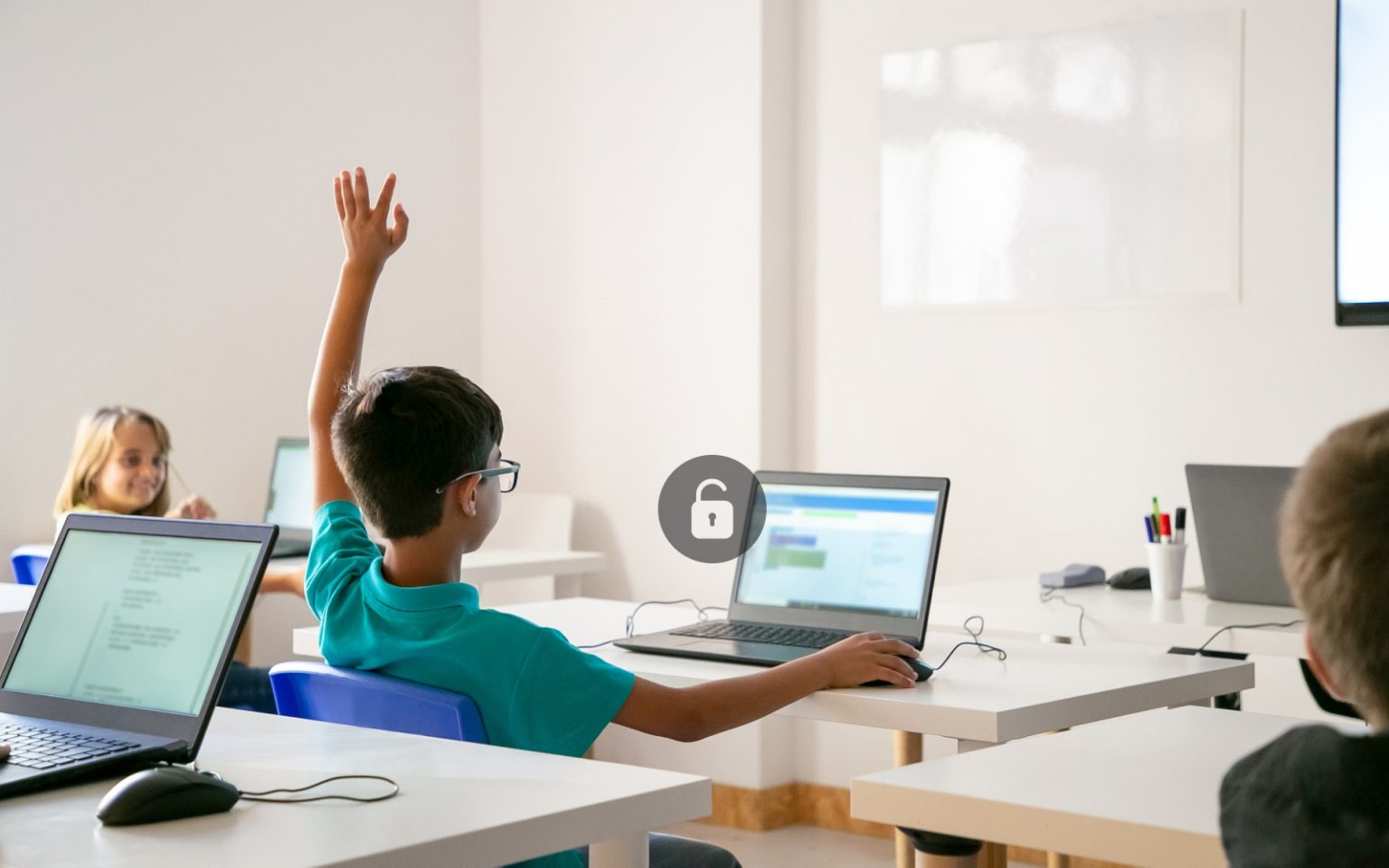Ever encountered the dreaded “Access Denied” message at school? It’s a maddening moment, isn’t it? Schools lock down the internet to promote focus and safety, but those blocks can cut off valuable resources. Whether you’re hunting for research gems, seeking a dose of entertainment, or trying to access an unfairly sidelined tool, we have strategies to break through those barriers.
In this guide, we’ll uncover savvy and secure ways to outsmart website blocks on your school computer, all while adhering to ethical guidelines.
Why Do Schools Block Websites?
1. Preventing Distractions
Time is a treasure in education, yet social media and gaming gobble hours without warning. Social media and streaming apps are designed to seize attention. Video games pose similar risks, making lesson focus a challenge. By eliminating these distractions, schools create a place that puts education over idle entertainment.
2. Ensuring Student Safety and Cybersecurity
Cybersecurity is a rising concern for schools. They block websites to protect students from cyber threats, including:
- Phishing attacks – Fake sites that steal personal details.
- Malware and viruses – Harmful software that can infect school computers.
- Online scams – Fake offers that trick students into sharing sensitive info.
3. Preventing Access to Inappropriate Content
The internet has content that can be unsuitable for students, like violent or explicit material. Schools use filters to block:
- Adult content sites
- Gambling platforms
- Hate speech and extremist content
- Illegal activities like drugs and weapons
By blocking these sites, schools ensure students have a safe and age-appropriate online experience.
4. Managing Network Bandwidth
Streaming sites like YouTube, Netflix, and Twitch use a lot of internet bandwidth. When many students stream or game at once, it can slow down the school’s internet, impacting important activities like:
- Online research and learning
- Video calls for remote classes
- Cloud-based educational tools
5. Compliance with Educational Policies and Laws
Schools must follow various regulations about student internet use. Many laws ensure students are not exposed to harmful online content.
6. Preventing Cheating and Academic Dishonesty
Blocking websites also helps reduce cheating. Many students use sites that offer:
- Essay-writing services (plagiarism or buying assignments).
- Test answers and homework solutions (cheating in exams).
- AI tools like ChatGPT (avoiding original thought).
By blocking these resources, schools promote academic integrity and independent learning.
Methods to Unblock School Computer Restrictions

1. Use a URL Shortener
Sometimes schools block certain URLs, not whole sites. A URL shortener like Bitly or TinyURL can help you get around these limits.
How to Use a URL Shortener:
- Copy the URL of the blocked site.
- Go to Bitly (bitly.com) or TinyURL (tinyurl.com).
- Paste the URL and create a short link.
- Use the new link to access the site.
Pros:
- Simple and effective for basic restrictions.
- No software needed.
Cons:
- May not work with advanced blockers.
- Some short links might also be blocked.
2. Use Google Cache
Google saves copies of web pages, letting you view older versions of blocked sites.
How to Use Google Cache:
- Open Google and search for the website.
- Click the three dots next to the search result.
- Select “Cached” to see the saved version.
Pros:
- Quick and easy.
- No installation required.
Cons:
- Only works for static pages (not videos).
- May fail if the cache is outdated.
3. Use the Wayback Machine
The Wayback Machine keeps billions of archived web pages, allowing access to older versions of blocked sites.
How to Use the Wayback Machine:
- Go to archive.org/web.
- Enter the blocked site’s URL.
- Pick a past date and click on a snapshot.
Pros:
- Great for historical content.
- No software installation required.
Cons:
- Doesn’t work for real-time updates or videos.
- Some sites may not be archived.
5. Use a Web Proxy
A web proxy acts as a middleman between your device and the internet. It fetches content for you, helping you bypass school restrictions.
How to Use a Web Proxy:
- Go to a free proxy site like HideMyAss, KProxy, or ProxySite.
- Enter the blocked website’s URL.
- Choose a server location if possible.
- Click “Go” or “Connect” to access the site.
Pros:
- No installation required.
- Works on most school computers.
Cons:
- Slower browsing speeds.
- Not secure for sensitive info.
7. Use a VPN (Virtual Private Network)
A VPN encrypts your internet traffic and routes it through a remote server, which protects your privacy.
How to Use a VPN:
- Download a VPN and install it on your device.
- Open the app and connect to a server outside your school’s network.
- Browse the internet freely once connected.
Pros:
- Encrypts your internet traffic for security.
- Works on most devices.
Cons:
- Some schools block VPNs.
- Installation may not be allowed on school computers.
If you’re trying to unblock Netflix on a school computer, a VPN is your best option. Connect to a VPN server in a different location to bypass network restrictions and enjoy Netflix without restrictions.
8. Use Tor Browser
Tor Browser routes your internet traffic through multiple layers of encryption. It makes it hard to track your online activity.
How to Use Tor:
- Download Tor Browser from torproject.org.
- Install and open the browser.
- Browse blocked sites anonymously.
Pros:
- High privacy and anonymity.
- Bypasses most school restrictions.
Cons:
- Slow browsing speeds.
- Some schools block Tor downloads.
How to Stay Safe While Bypassing School Restrictions

1. Understand the Consequences Before You Start
Be aware of the consequences before trying to bypass school restrictions. Schools have strict internet rules, and breaking them can result in you losing your internet access, disciplinary action, permanent record issues, and even legal trouble.
3. Be Mindful of When and Where You Access Blocked Sites
Trying to bypass restrictions during class hours may get you into trouble if caught. If you need access for educational purposes, consider asking your teacher or IT admin, download content in advance, or do it after school hours.
4. Use Ethical Judgment and Avoid Illegal Content
Just because you can bypass restrictions doesn’t mean you should. Some sites are blocked for good reasons, such as:
- Inappropriate or harmful content – Adult, gambling, or illegal streaming sites.
- Pirated materials – Copyrighted movies, books, and software.
- Dangerous forums – Sites that promote cyberbullying, hacking, or extremist content.
5. Know When to Stop
You should stop bypassing school restrictions if you notice any of these:
- Strange pop-ups asking for personal details.
- Your device runs unusually slow after installing software.
- Receiving warnings from your school’s IT department.
Final Thoughts
At day’s end, school internet limitations aim to foster focus and security, yet they often snuff out access to vital content. Although navigating these digital roadblocks is feasible, we must ponder: Is it time for schools to rethink their policies and broaden access to learning treasures? Until change arrives, the strategies in this guide will help you sidestep restrictions safely.



